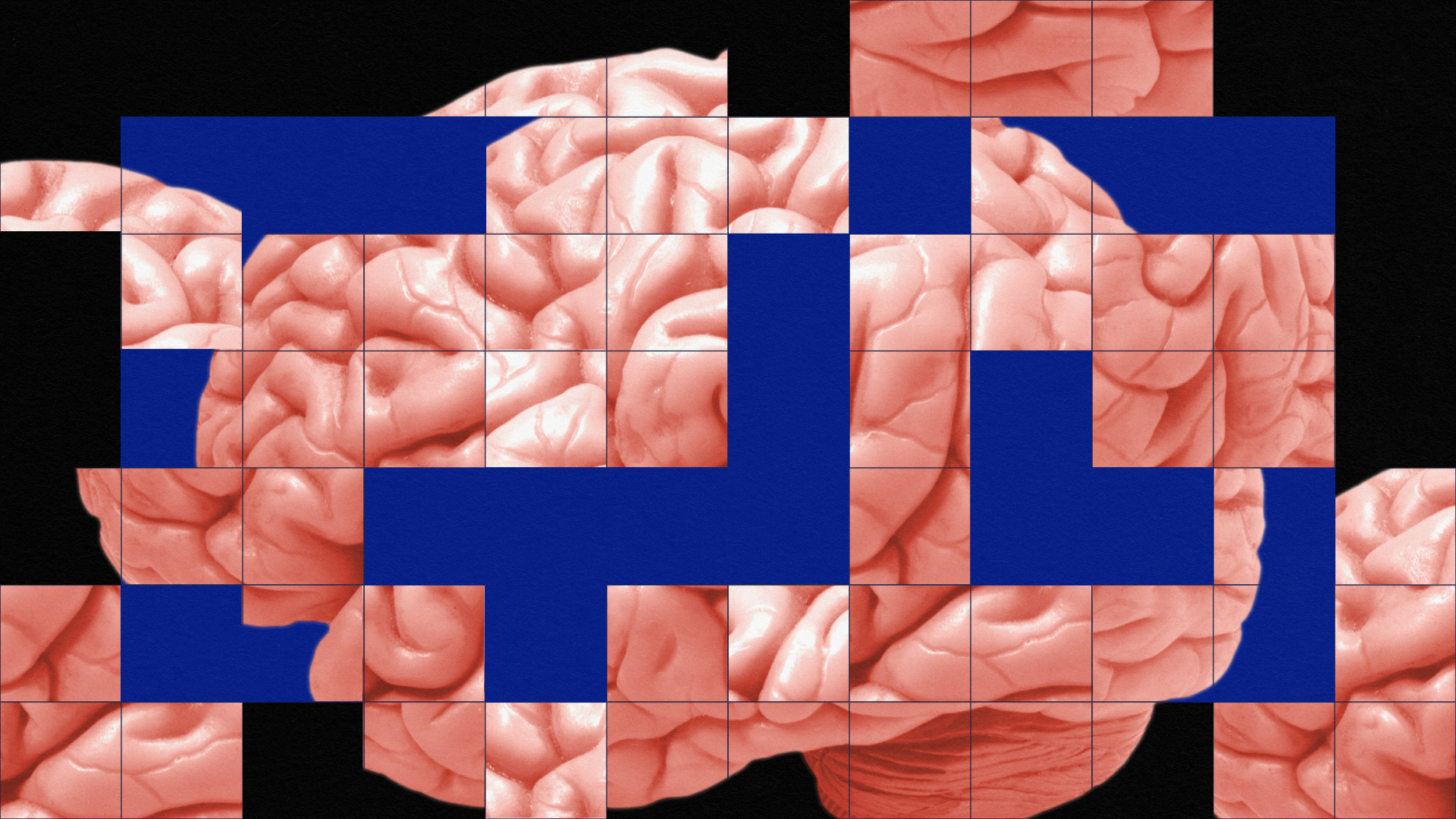From a neural standpoint, memory structures “are in of themselves rather dumb,” says Damasio. “It’s not that they know anything consciously. What they know is they have a sort of internal testimony of the simultaneous occurrence of certain things at a certain point.”
Antonio Damasio: At most the prefrontal cortex is guiding the process, but I think there is one, while we are discussing screens, metaphoric screens and different spaces, where the show is going on, auditory, visual and olfactory and tactile and so on. I think what is interesting is to think that those spaces, those performance spaces, are separate. They’re extremely sophisticated. They tend to be, in terms of brain structure, very, very modern in evolution. They tend to have some of the most sophisticated circuitry. Take for example the visual system. Our visual system is an amazing instrument and of course the visual system that allows us to perceive right now something with a fine perception that I can have of your collar and your sweater and so on. All of that is extremely sophisticated, but then surrounding that, let’s consider that like an island in the brain and then surrounding that there is an ocean and that ocean is filled with knowledge of how different parts, different components of past perceptions have been put together in time when they were occurring. And so I think that an interesting analogy is the analogy of strings that pull the puppets that are in the performance spaces and so it’s not that we should privilege the performance spaces as the thing that matters. Of course that matters very much because that is where our consciousness...
Siri Hustvedt: That’s how we live.
Antonio Damasio: Yeah, that’s where our consciousness is actually occurring, quote, unquote, but it is occurring there only by the grace of these strings that are being pulled from the other space, from this elsewhere where you have what I like to call convergence/divergence zones, which are in of themselves...
Siri Hustvedt: Now this is new. I just want to say just pause for a second because this convergence/divergence this is what you’re… You’re making a broader category for parts of the brain that I recognize, but you are putting it together in a larger context as I understand after reading your book yesterday.
Antonio Damasio: Good.
Siri Hustvedt: Okay, just to… I just wanted to give that little info.
Antonio Damasio: Your spirit has enlarged tremendously.
Siri Hustvedt: Anyway.
Antonio Damasio: But, so yeah, that is a… It’s very interesting because from a neural standpoint you could even say that these structures are in of themselves rather dumb. It’s not that they know anything consciously. What they know is they have a sort of internal testimony of the simultaneous occurrence of certain things at a certain point. So for example, if I will tomorrow remember talking to you today I will think of certain words that you have said like for example, the sentence you just said about the book, which I probably will remember in some form and I will remember the fact that you have this sweater that I presume is pink, although I’m not very good with color.
Siri Hustvedt: Very pink.
Antonio Damasio: Is pink okay?
Siri Hustvedt: Yes.
Antonio Damasio: Good, okay.
Siri Hustvedt: Deep pink.
Antonio Damasio: Deep pink and the white shirt and your beautiful blonde hair. So how do I put this thing together? This is occurring right now and I am recording the simultaneity of occurrence of your voice, of certain ideas and of certain garments, but they are in different places, so we need to find in the brain a place where signals about all these different things can come together and can make a record of the proximity and simultaneity of this in time is what counts.
Siri Hustvedt: That’s right, yes. Temporality, we’ll go there next, yes.
Antonio Damasio: And once that happens, once that record is made then it is possible to reactivate the record and to come back into the same regions where this is happening to us right now and reconstruct something that is going to be a paler version of the original, but it’s going to relate to the original and that by the way, gets you into one very important issue, which is the issue that you don’t have a facsimile memory of anything.
Siri Hustvedt: No, this is important, yes.
Antonio Damasio: I don’t have a memory. I’m not going to have a Polaroid picture of you right now talking to me complete with soundtrack. What I’m going to have is all these bits and pieces of information with which I will be allowed to reconstruct something of this moment, but of course the reconstruction is not going to be entirely accurate, and who knows? Maybe then in time I may even make a confusion and I could be asked in court to say what you were wearing and I could say that you were wearing a blue...
Siri Hustvedt: Actually and I think this is quite important, the fact that our brains and our memories are not like recording devices, not like film and that that is how we make sometimes significant errors. And those errors also can be created by an emotion attached to the he experience, so that you can even entirely invert a memory, depending on the motivation in some way—and I don’t mean conscious motivation, but a deeply embodied drive or push sometimes that can have an emotional valence that will change memory.
Antonio Damasio: Right, absolutely and people you know the testimonies in court are very often affected by that and you have all sorts of misattribution errors, inversions of the time sequence and so and that is because we don’t have a filmic medium. We don’t have celluloid with an optic soundtrack attached to it. What we have is this incredibly sophisticated mechanism of transforming… It’s almost like coding. You have these little bits and pieces that are occurring in time and then you have the possibility of reconstruction or reactivation, which is they are very, very, very intriguing and by the way, it is extremely economic. You know the brain whenever it can, does things fuzzily and lazily and you know if there is no need to repeat and reinvent the wheel it won’t.
Siri Hustvedt: Well, and I think this is very important for perception because perception, the way we perceive things has to do with deep learning in the brain and one of my favorite philosophers, who you mentioned a footnote in your most recent book, Maurice Merleau-Ponty talks about perception as something he calls stereotypes and in neuroscience there is a similar idea, which is that the brain also will take in information according to its own expectations.
Antonio Damasio: Absolutely. Yeah, because we don’t… You know it’s not just that we have memory of the things that we have been living through since we were born. We have past memories that we have inherited through a whole history of evolution before us that in fact have memories of things that our forerunners have been doing and I’m not just talking about the human forerunners, but forerunners that go all the way into reptiles and single cells. You know things that have been done in a certain way in life forms and that of course been memorized by the biological systems we inherited.
Recorded July 2, 2010





